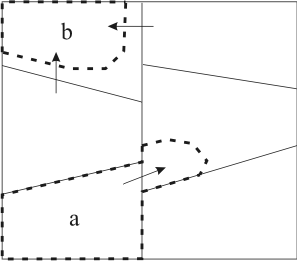
engineering & technology publications
ISSN 1759-3433
PROCEEDINGS OF THE NINTH INTERNATIONAL CONFERENCE ON CIVIL AND STRUCTURAL ENGINEERING COMPUTING
Static Partitioning for Heterogeneous Computational Environments
Structural Engineering Computational Technology Research Group, School of Engineering and Physical Sciences, Heriot-Watt University, Edinburgh, United Kingdom
In this paper a method for the non-uniform partitioning of cable membrane structures for analysis on distributed computing systems is presented. The developed partitioning method is based on simple, well-understood algorithms and some engineering heuristics. The general layout of the algorithm of the static partitioning for heterogeneous systems is:
- Using a state-of-the-art graph partitioning algorithm to generate
a partitioning where an equal number of elements is assigned
to each subdomain as in a homogeneous computational system.
- With the knowledge of the relative computational power of the
processors in the heterogeneous system calculate the "correct", target
number of elements that should finally
be allocated to each subdomain.
- Setup a subdomain graph and allocate the number of elements calculated
in the previous step to each node of the subdomain graph. In this case a
node represents a processor to which the subdomain will ultimately be
allocated. At this time the subdomain graph will reflect an
unbalanced state.
- Use the diffusion algorithm [1]
on the subdomain graph
to determine the number of elements that should be migrated to
other subdomains to equalise the number of
elements in the subdomain graph.
- The migration of elements between subdomains is ordered in such
a way that at one step, for one particular subdomain the elements
are only migrated away, for example subdomain b in
Figure 138.1.
- Now consider the equalised subdomain graph again and
the number of migrating elements calculated by the diffusion algorithm.
In this step "virtual" elements are assigned to the subdomains.
The total number
of "virtual" elements assigned to a subdomain is equal to the
total number of elements which should be migrated to the subdomain
as calculated in the previous step.
The reason for the introduction of "virtual" elements
is that the migration is carried out with a modified Kernighan-Lin
algorithm which operates on pairs of elements.
- Apply the modified Kernighan and Lin algorithm [2] to determine the actual elements that should be migrated.
The paper includes a number of examples to assess the quality of the partitions generated by the method.
- 1
- G. Cybenko. "Dynamic load balancing for distributed memory multiprocessors". J. Parallel and Distributed Computing, 7:279-301, 1989. doi:10.1016/0743-7315(89)90021-X
- 2
- B. W. Kernighan and S. Lin. "An efficient heuristic procedure for partitioning graphs". The Bell System Technical Journal, 29:291-307, February 1970.
purchase the full-text of this paper (price £20)
go to the previous paper
go to the next paper
return to the table of contents
return to the book description
purchase this book (price £123 +P&P)
